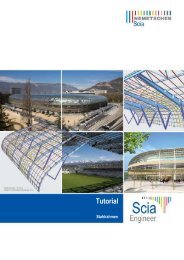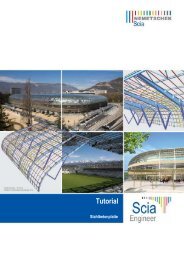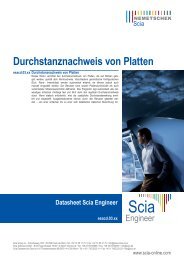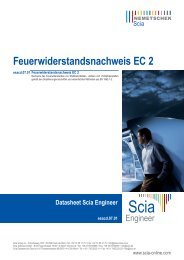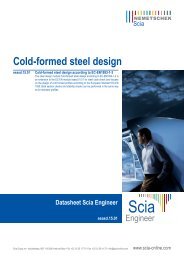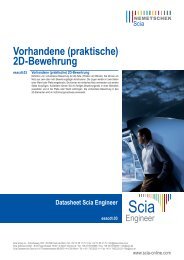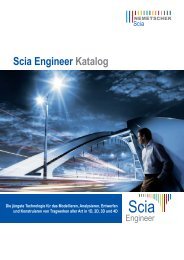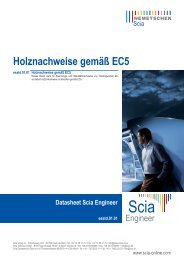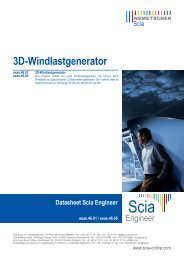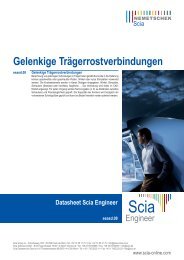Advanced Package Training Scaffolding 2011.1 - Scia-Software GbR
Advanced Package Training Scaffolding 2011.1 - Scia-Software GbR
Advanced Package Training Scaffolding 2011.1 - Scia-Software GbR
Create successful ePaper yourself
Turn your PDF publications into a flip-book with our unique Google optimized e-Paper software.
Start<br />
Choose ΔF<br />
u0 = 0<br />
F0 = 0<br />
F = F0 + ΔF<br />
Determine KT at F0<br />
Solve KT. Δu = F<br />
u = u0 + Δu<br />
Convergence<br />
in u?<br />
Stop<br />
Yes<br />
Any ΔF left?<br />
No<br />
u0 = u<br />
Determine F0<br />
45<br />
<strong>Scaffolding</strong><br />
In this figure, the tangential stiffness KT is used. The symbol u depicts the displacements and F is the<br />
force matrix.<br />
The original Newton-Raphson method changes the tangential stiffness in each iteration. There are also<br />
adapted procedures which keep the stiffness constant in certain zones during for example one<br />
increment. SCIA ENGINEER uses the original method.<br />
As a limitation, the rotation achieved in one increment should not exceed 5°.<br />
No<br />
The accuracy of the method can be increased through refinement of the finite element mesh and by<br />
increasing the number of increments. By default, when the Newton-Raphson method is used, the<br />
Number of increments is set to 5 and the number of 1D elements is set to 4 in the mesh setup.<br />
In the Mesh setup we also advise to deactivate the option “Generation of nodes in connections of beam<br />
elements”.



